Places to Visit in Minnesota

Searching for the most beautiful places to visit in Minnesota on vacation? Well, you are in the right place! I learned that the name Minnesota comes from the Dakota word meaning “sky-tinted water”. This is a wonderful state of more than 10,000 lakes, endless pine forests, and unique cultural traditions.
I loved exploring some of its 90,000 miles of shoreline (more than California, Florida, and Hawaii combined!). This northern gem is a paradise for outdoor lovers. I think it's super affordable and attractive as a new vacation spot. I spent four weeks wandering through its wild backcountry, charming small towns, and unique hotels & resorts, and I’ve gathered the places that left the biggest mark on me. I think you’ll enjoy them too.
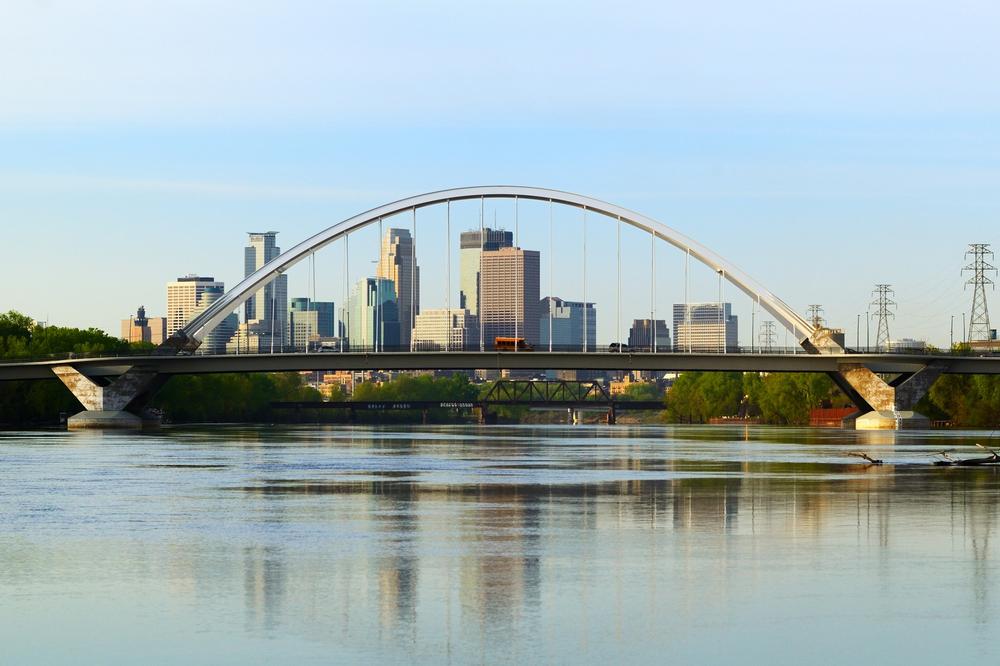
1. Minneapolis
I thought that this was one of the best places to visit in Minnesota when we moved to the Midwest. Why? First off, it's such a unique city where sleek modern architecture meets nature’s raw beauty. In addition, the lakes and tree-lined parkways gave it a refreshing, outdoorsy pulse. I also loved the thriving arts scene, inventive food culture, and Nordic-inspired design edge.
We drove about 3.5 hours northwest from Chicago to Minneapolis. Known as the “Mill City” for its flour-milling past, it has reinvented itself as a cultural hub.
I based myself downtown for four days at the stylish 4-star Hewing Hotel (around $279/night) for two days, a converted 1897 warehouse with rustic wood beams and rooftop views.
I started with an espresso at Dogwood Coffee Co., one of my absolute favorite stops...their sleek café and expertly roasted beans made for the perfect morning start. Next, we saw a cool art exhibit at Veronique Wantz Gallery.
I loved our lunch at Black Sheep pizza (just around the corner from Hewing Hotel), home to the first coal-burning pizza restaurant in Minnesota!
From there, I set out to explore, wandering the trails around the Chain of Lakes, marveling at the striking Walker Art Center, and strolled through the Minneapolis Sculpture Garden.
One place that you absolutely can't miss is Mill City Farmers Market located on the Chicago Mall in the historic train shed of the Mill City Museum! The market is open on Saturdays and Sundays throughout summer and every second Saturday of the month in the winter.
- Location: Southeastern Minnesota along the Mississippi River, west of St. Paul and south of Brooklyn Park
- Map & Directions
What I loved best:
Food was a revelation, especially Spoon and Stable's buttermilk pancake brunch which was my highlight.

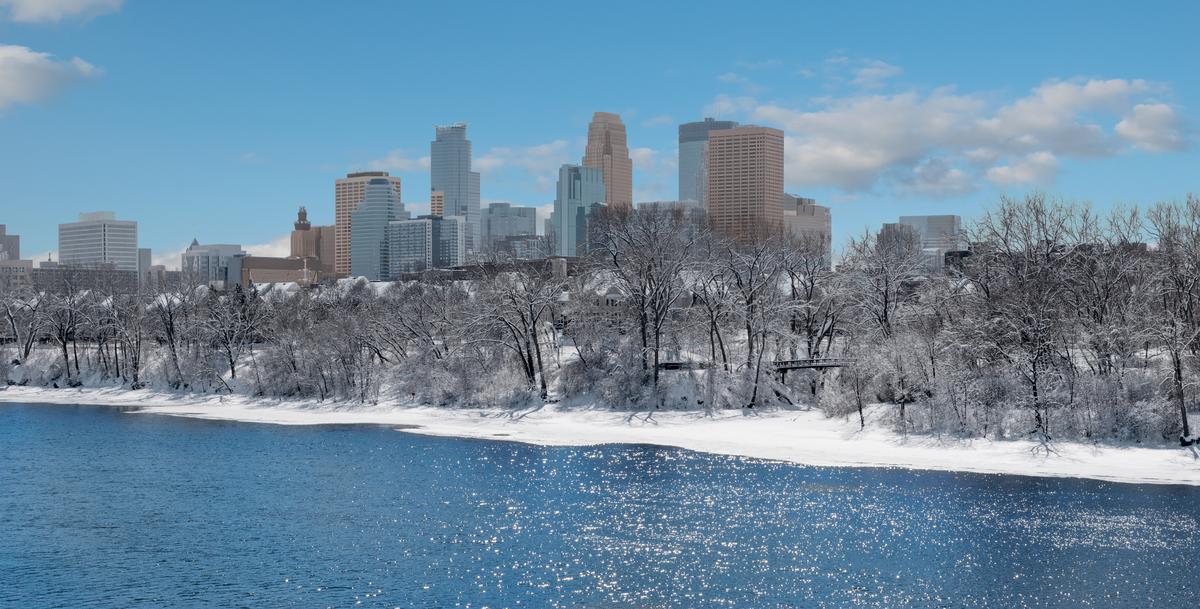
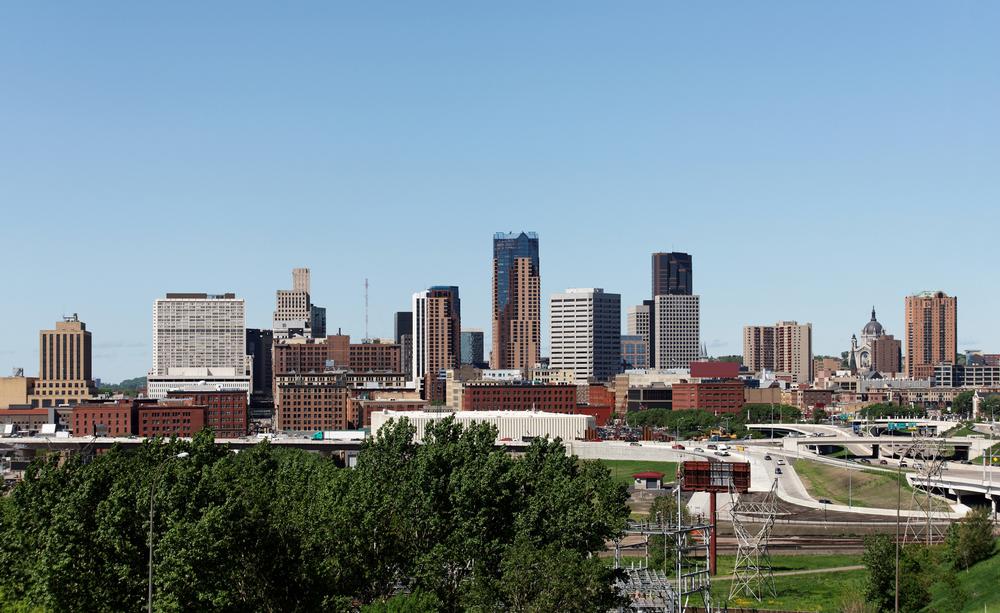
2. Saint Paul
This is one of my favorite places to visit in Minnesota because it blends big-city culture with cozy Midwestern charm. In addition, I loved the great selection of attractions, outdoor trails, and shows in Minnesota’s capital.
We drove just 15 minutes east from Minneapolis to Saint Paul where we toured the Minnesota State Capitol (completed 1905, free guided tours), wandered down Summit Avenue to admire Victorian mansions including the James J. Hill House (1891, $10 tours), and browsed the Science Museum of Minnesota ($20). For the night, we stayed at the Saint Paul Hotel, a 1910 landmark with elegant rooms overlooking Rice Park ($195) and then moved to a more affordable Airbnb for seven days.
I loved that outdoor enthusiasts can enjoy activities along the Mississippi River and the amenities at Como Park. In addition, cultural experiences can be found at the Minnesota History Center, the James J. Hill House, and various theaters.
- Location: Southeastern Minnesota along the Mississippi River, east of Minneapolis and north of Inver Grove Heights
- Location: Central Minnesota along the Mississippi River, northwest of Minneapolis–St. Paul and southeast of Sartell Map & Directions
What I loved best:
I indulged in hearty Midwestern comfort food at Cossetta’s Italian Market, my favorite higlight. Their pizzeria is a must-visit if you are traveling with kids.

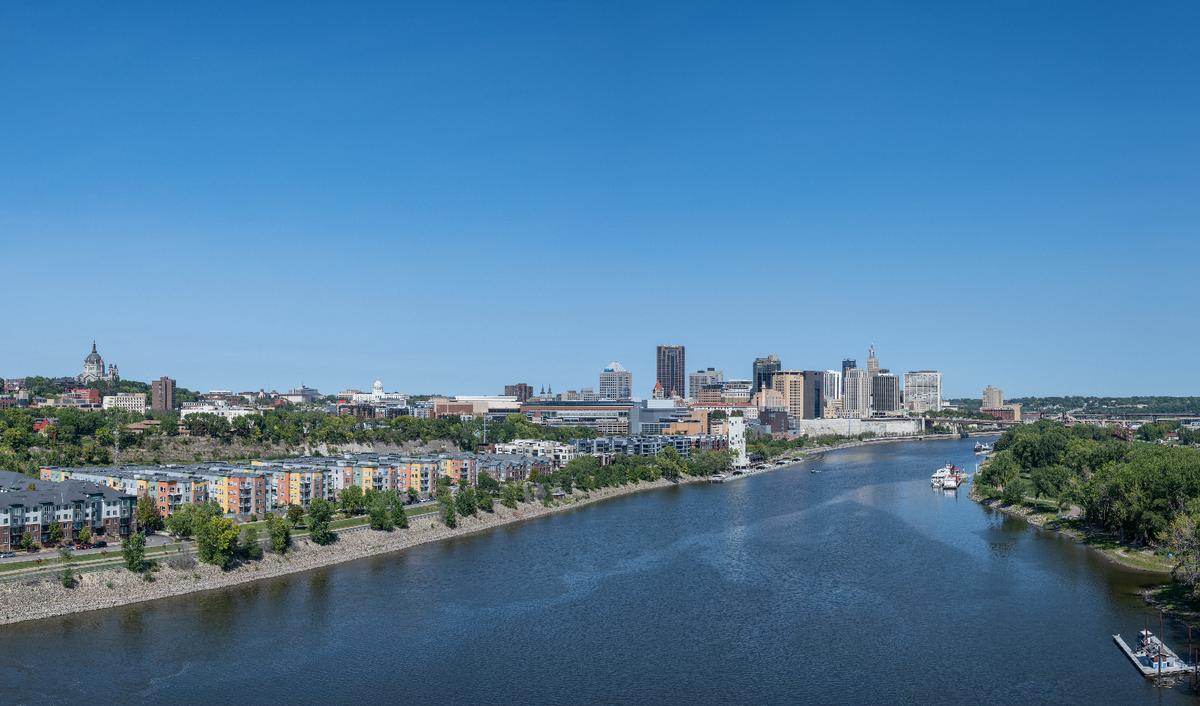
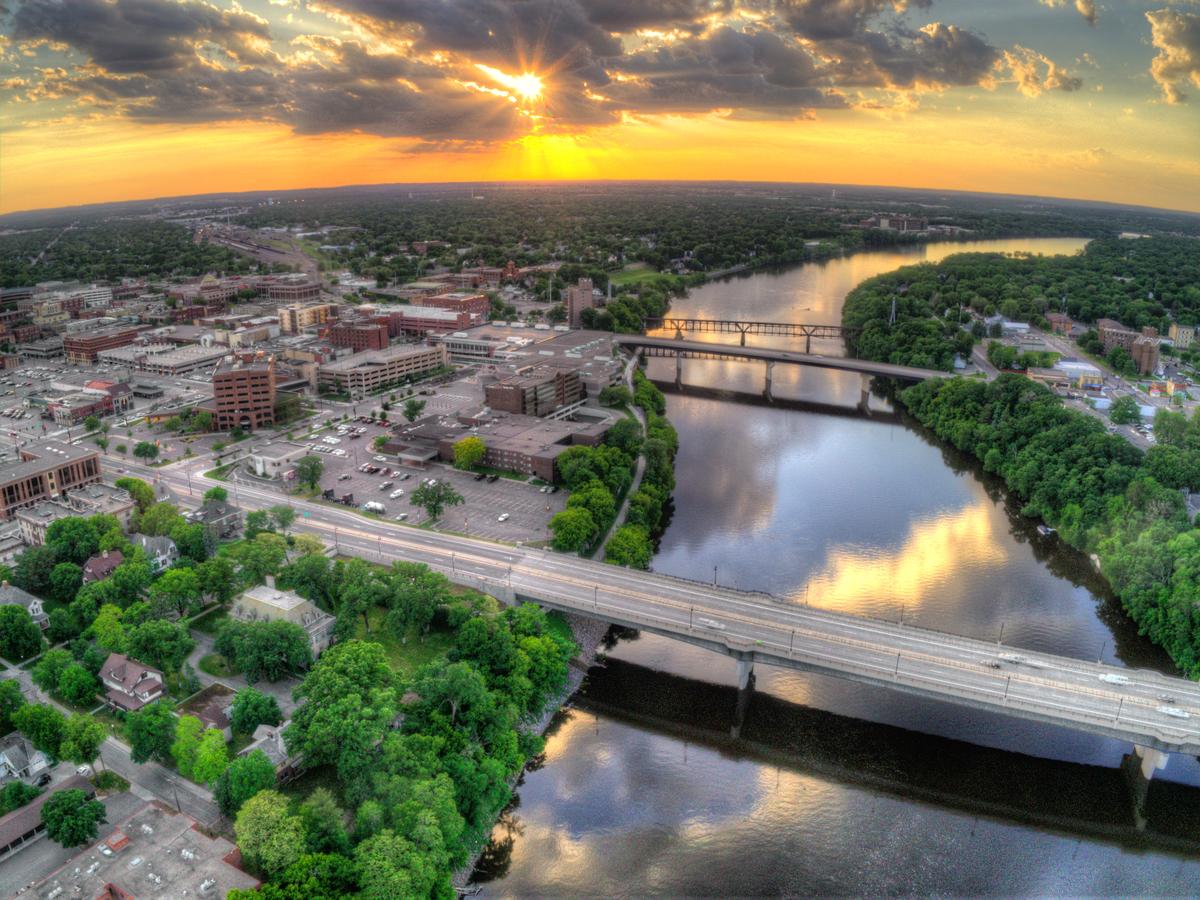
3. St. Cloud - 1 hour from Minneapolis
Set along a scenic stretch of the Mississippi, this is one of the most unexpectedly peaceful cities I’ve explored in central Minnesota. We drove about one hour northwest from Minneapolis to the “Granite City.” I learned that it was once one of the nation’s leading granite producers.
On our day trip, we explored the Stearns History Museum (two floors of exhibits, $10 admission), and walked through downtown’s historic architecture.
- Location: Central Minnesota along the Mississippi River, northwest of Minneapolis–St. Paul and southeast of Sartell
- Map & Directions
What I loved best:
Visiting Munsinger & Clemens Gardens (14 acres of formal flower gardens on the Mississippi River!) was my favorite highlight.
If you decide to stay overnight, Courtyard by Marriott Downtown (from $179/night) is conveniently located near the riverfront and downtown shops.
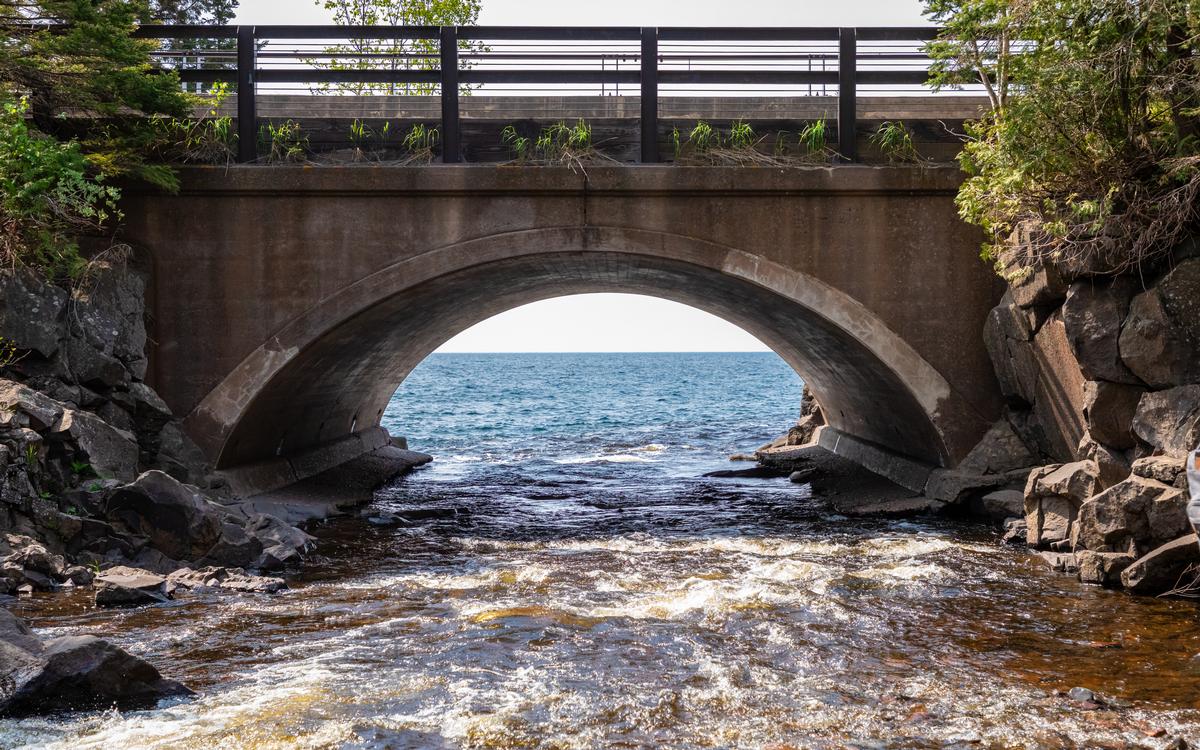
4. Lutsen
This mountain-and-lake town in the Sawtooth Mountains is one of my favorite places to go when I'm in the mood for adventure. We drove about 4.5 hours north from Minneapolis to one of the North Shore’s oldest resort towns (population only about 200). I learned that it was founded as a fishing camp in the 1880s, and it grew into a retreat for city travelers from there.
What I loved most about Lutsen was its rare mix of alpine scenery, lakeside beauty, and cozy resort-town vibes. Also known as Minnesota’s premier ski area, it's a year-round family vacation destination in the Midwest.
We checked into 3-star Caribou Highlands Lodge (from $159/night) for two stress-free days. I enjoyed visiting the North Shore Commercial Fishing Museum in nearby Tofte ($5 admission), and strolling along Lake Superior’s rocky shoreline.
- Location: Northeastern Minnesota along the North Shore of Lake Superior, southwest of Grand Marais and northeast of Tofte
- Map & Directions
What I loved best:
Riding the Lutsen Mountain Tram up Moose Mountain was my favorite highlight (1,000-foot vertical rise, tickets $29)!
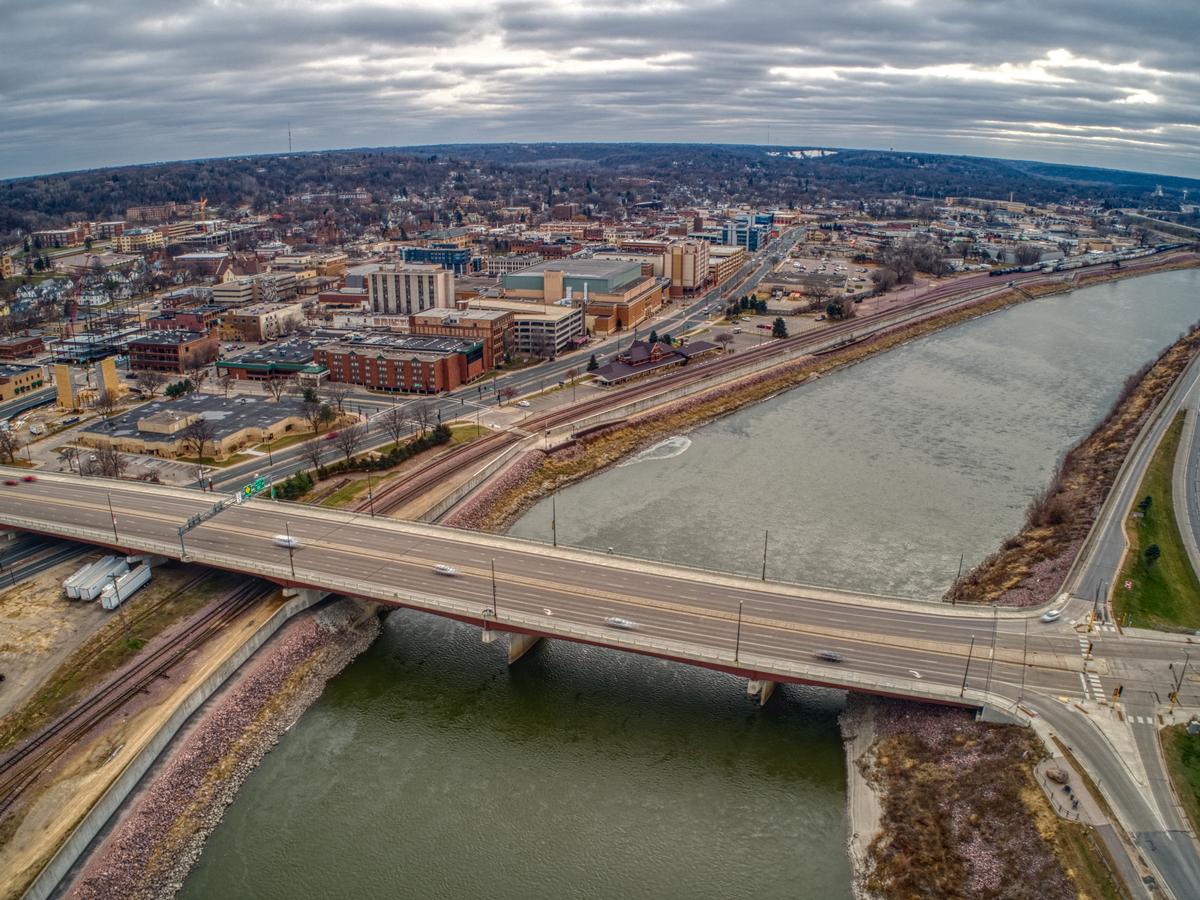
5. Mankato
If you’re looking for a place where river views, art, and outdoor adventure collide, this small-city is a standout.
We drove about 1 hour 30 minutes southwest from Minneapolis to this city (population around 44,000). The city is known for its role in frontier history and the U.S.–Dakota War of 1862. I stayed overnight at the Hilton Garden Inn Downtown (from $111/night) for two days, which put us within walking distance of coffee shops, local restaurants, and the riverside trails.
Set along the bend of the Minnesota River, Mankato struck me as a friendly river town with a surprising mix of outdoor beauty, historic landmarks, and a lively college-town scene.
During our stay, we visited Reconciliation Park, the historic site of the largest mass execution in U.S. history (38 Dakota men in 1862). In addition, we toured the Blue Earth County Historical Society Museum ($7 admission), and admired the limestone architecture downtown.
- Location: South-central Minnesota along the Minnesota River, southwest of Minneapolis–St. Paul and northeast of New Ulm
- Map & Directions
What I loved best:
My personal highlight was stopping for coffee at Fillin' Station Coffeehouse which won the Best Coffee Shop vote and really lets you feel the local vibe.

6. Winona
This place immediately won me over with its stunning scenery and mix of historic charm, river-town energy, and artsy spirit.
We drove about 2 hours southeast from Minneapolis (115 miles to Winona (population around 25,000). I loved that this 19th-century river and rail hub is filled with Victorian architecture and river history.
During our two day visit, we explored the Minnesota Marine Art Museum ($12 admission, works by Monet, Van Gogh, and O’Keeffe), toured downtown’s historic district (on the National Register!), and climbed Garvin Heights Overlook to enjoy Mississippi Valley views on vacation.
- Location: Southeastern Minnesota along the Mississippi River, southeast of Rochester and northwest of La Crosse, Wisconsin
- Map & Directions
What I loved best:
Staying at the Alexander Mansion Historic Bed & Breakfast for two days, a lovingly restored 1886 Victorian with four-poster beds and gourmet breakfast ($165), was my personal highlight.
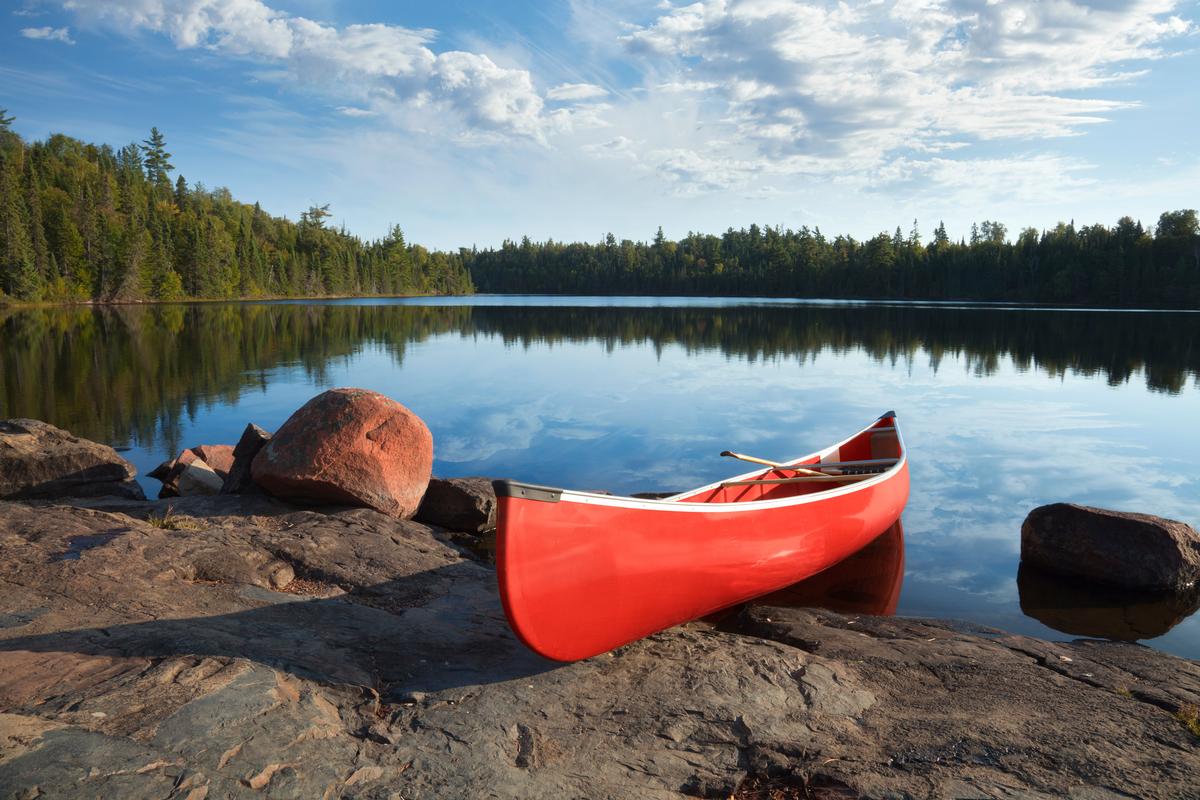
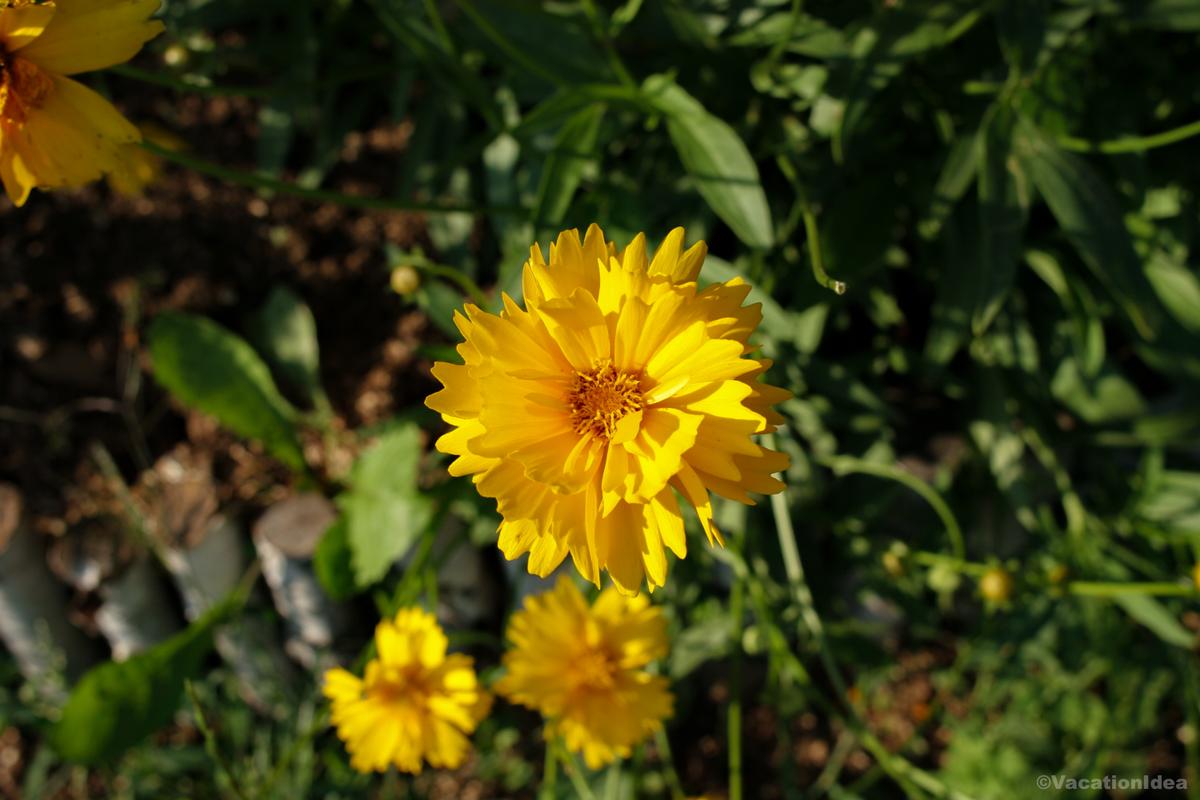
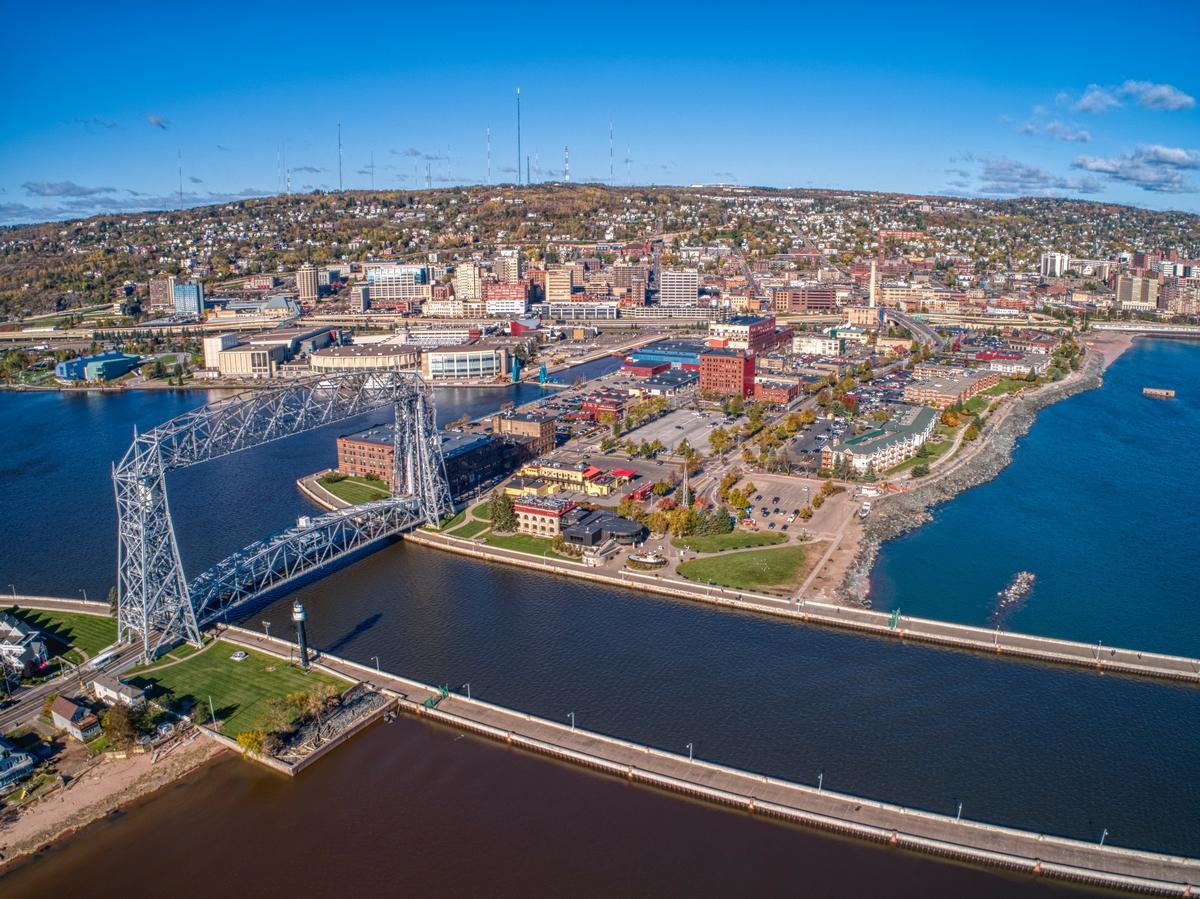
7. Duluth - 2.5 hours north from Minneapolis
Stretching along the rugged shores of Lake Superior, this is one of the most dramatic and captivating cities I’ve ever visited in the Midwest.
We drove 2.5 hours north from Minneapolis to Duluth (population around 86,000), located on the western tip of Lake Superior.
For the night, we stayed at Fitger’s Inn, a boutique hotel inside a 19th-century brewery complex on the lakefront ($175/night). While in town, we watched the iconic Aerial Lift Bridge rise for ore ships (spans 386 feet, built 1905), toured the Lake Superior Maritime Visitor Center (free), and wandered Canal Park’s shops in restored warehouses.
You can also check out the historic Glensheen Mansion, and take a scenic ride on the North Shore Scenic Railroad. There is also plenty to enjoy outdoors by walking on the Lakewalk Trail, visiting Enger Park and Tower, or hiking along the Superior Hiking Trail.
If you are traveling with kids, Great Lakes Aquarium is a must-visit.
A downside? We wished for cheaper admission (at $20 for adults it was steep), but the place was worth it!
- Location: Northeastern Minnesota on the western tip of Lake Superior, northeast of Cloquet and south of Two Harbors
- Map & Directions
What I loved best:
Evenings were my favorite highlight as they came alive with live music and open-air dining around Parsons Alley, a redevelopment that beautifully weaves history with creativity.
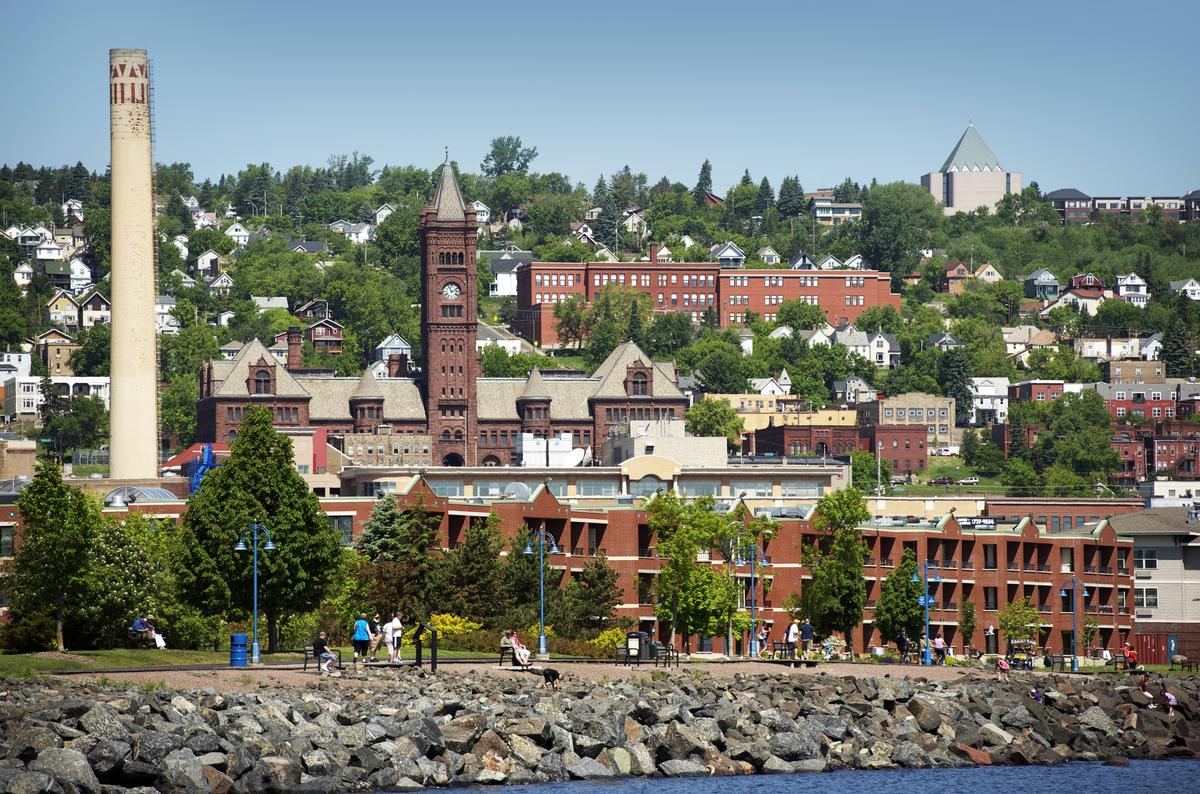


8. Rochester
Spreading out along the river, this is one of the most welcoming and well-designed cities I’ve visited in southern Minnesota.
We drove about 1 hour 30 minutes southeast from Minneapolis to this city (population around 122,000) best known as the home of the Mayo Clinic (founded 1889, now employing 34,000+ people).
I was instantly taken by this vibrant Midwestern city, with its leafy neighborhoods, striking historic buildings, and the Zumbro River.
We toured the Mayo Clinic Heritage Hall (free), explored the Mayowood Mansion (1911 estate of Dr. Charles Mayo, $15 tours), and walked along downtown’s skyway system (nearly 2 miles of indoor walkways).
- Location: Southeastern Minnesota along the Zumbro River, south of Minneapolis–St. Paul and north of Austin
- Map & Directions
What I loved best:
Staying at Kahler Grand Hotel for two days was my personal highlight, a historic 1921 property right across from the Mayo Clinic with old-world charm ($165/night).

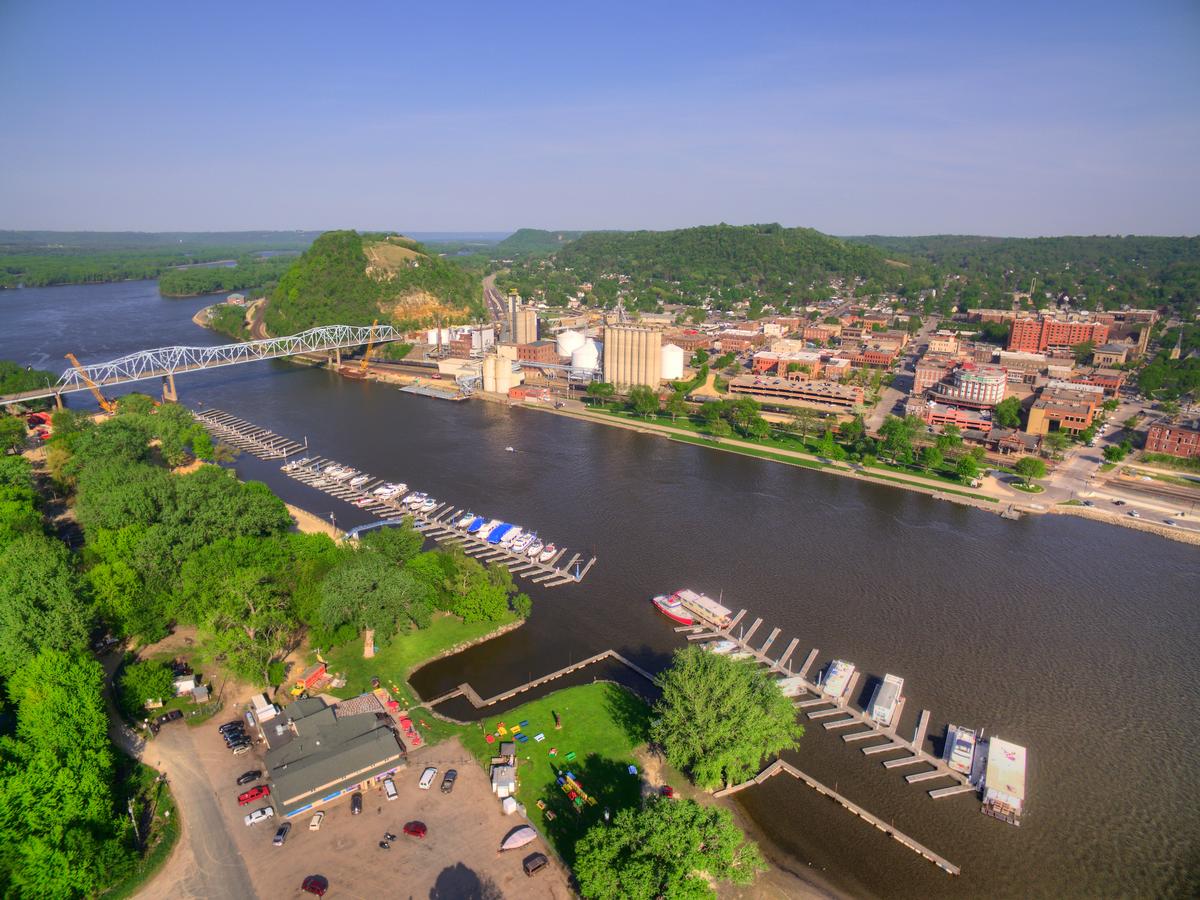
9. Red Wing
This Mississippi River town quickly became one of my favorite places to visit in Minnesota. Why? First off, it’s easy to reach, and beautifully walkable. In addition, I loved that it was so easy to reach on a day trip, less than an hour from Rochester.
Whether I’m wandering along the riverfront or heading up to catch the sunset at Barn Bluff, Red Wing always feels like the ideal blend of peaceful and refreshing.
I thought that the real star of Red Wing was the outdoors. Hiking up to the summit of Barn Bluff was a highlight, offering sweeping views of the Mississippi River.
What I loved best:
Colvill Park and the riverfront are perfect for slow strolls - I especially loved it in the fall, my personal highlight!
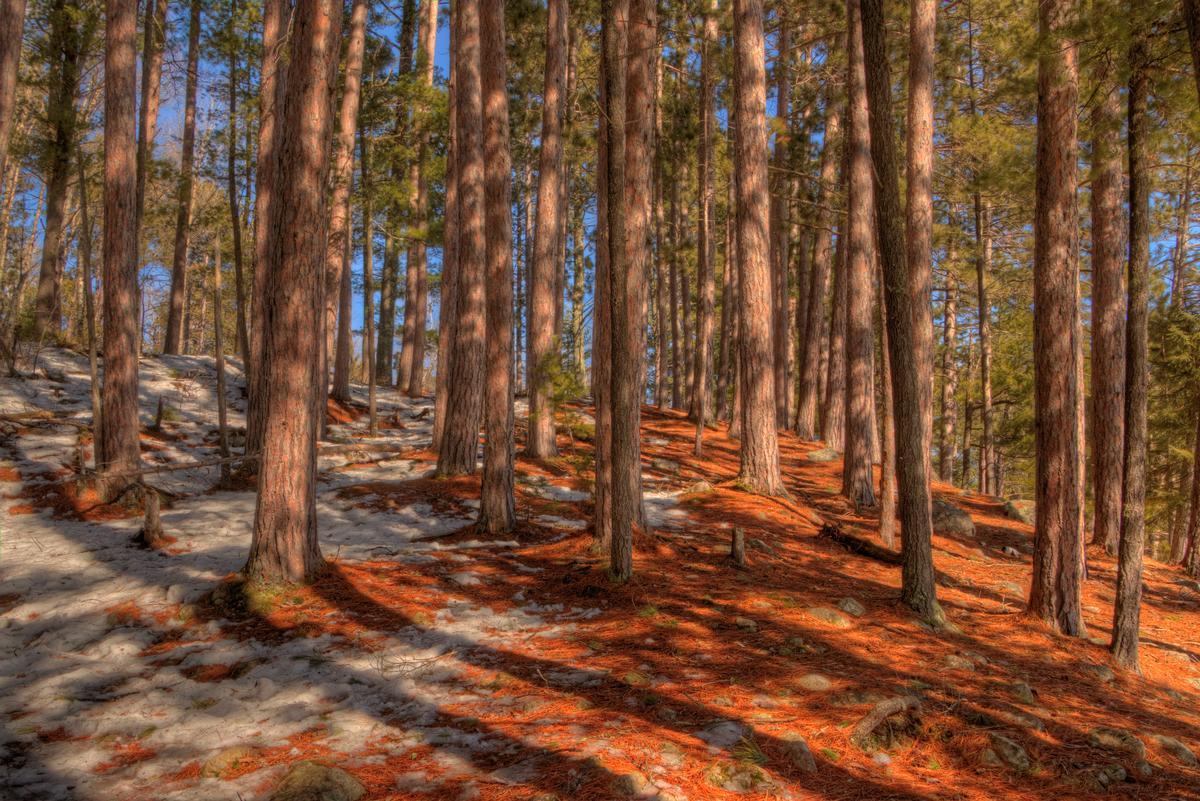
10. Ely
Chris and I both think that this Northwoods town, perched near the entry points of the Boundary Waters, is one of our favorite places when we're in the mood for a peaceful weekend outdoors. Once a booming iron mining town, I love the way this place now thrives on wilderness culture.
We checked into 3-star Grand Ely Lodge Resort (from $164/night) for care-free two days. During our visit, we toured the Dorothy Molter Museum (celebrating the “Root Beer Lady” who lived in the Boundary Waters until 1986, $6 admission), strolled along Sheridan Street’s historic storefronts, and visited the Ely-Winton History Museum ($5).
In addition, you can visit the International Wolf Center and the North American Bear Center, enjoy outdoor activities like hiking at Kawishiwi Falls Trail and paddling in the Boundary Waters Canoe Area Wilderness. Other options include shopping downtown, and checking out the Ely Folk School
- Location: Northeastern Minnesota near the edge of the Boundary Waters Canoe Area Wilderness, northwest of Lake Superior and northeast of Virginia
- Map & Directions
What I loved best:
Dinner at Insula Restaurant was my favorite highlight (first-come first-served!).
Locals told me about super remote camping at the Boundary Waters Canoe Area Wilderness (BWCA) which I plan to try on our summer trip.
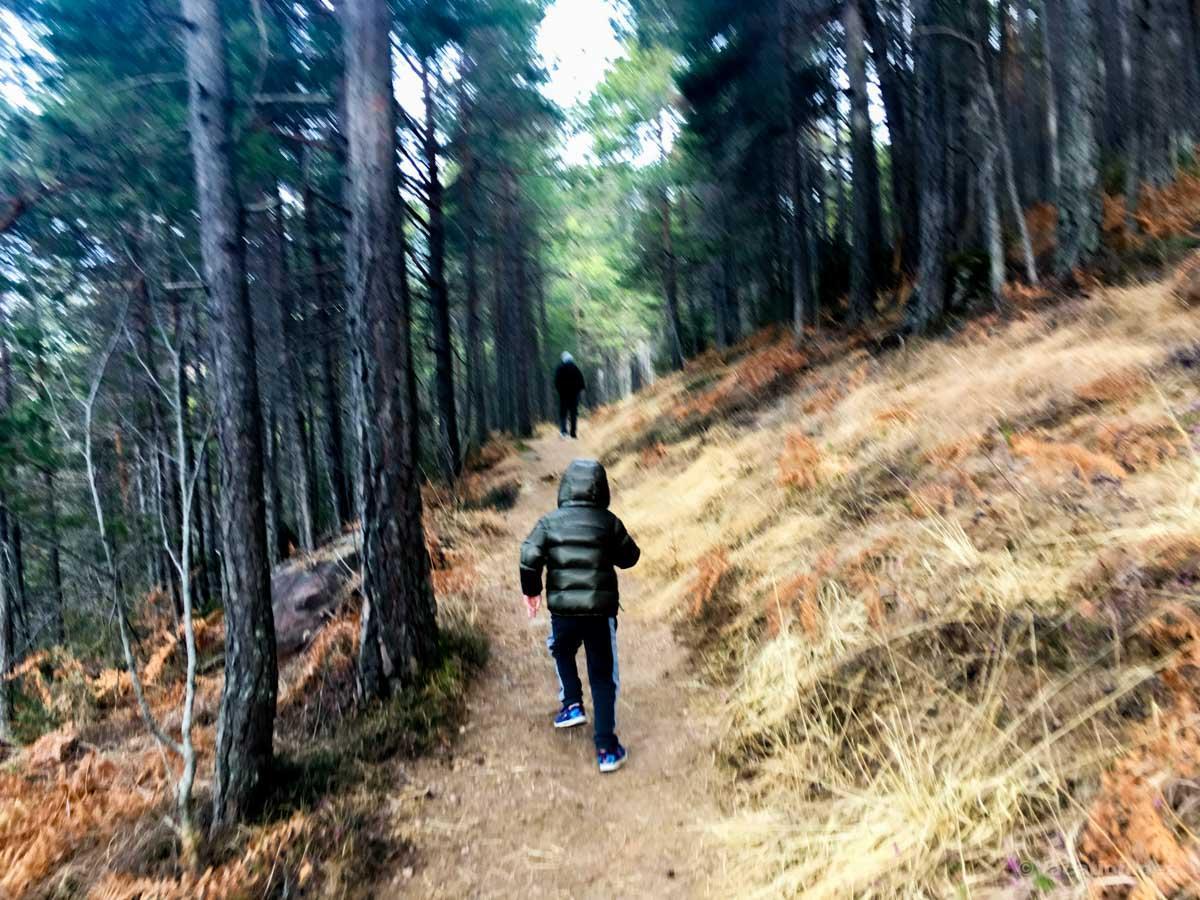
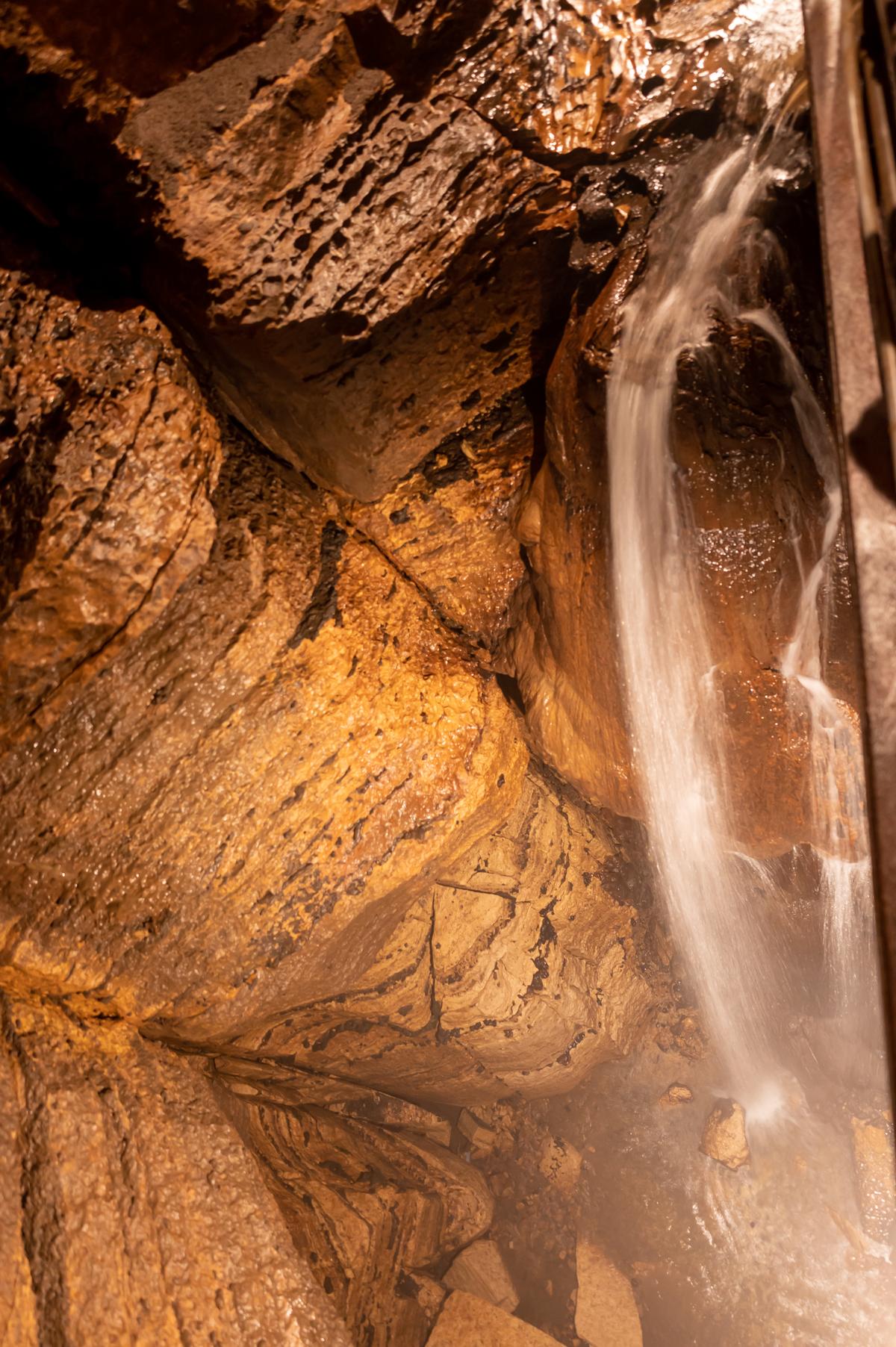
11. Niagara Cave, Harmony
Ready for a natural wonder that feels both mysterious and serene? This cave was easily one of the most awe-inspiring underground experiences I’ve had in the Midwest!
Tucked away in the rolling bluff country near the Iowa–Minnesota border, this national natural landmark feels like a hidden world waiting to be discovered.
The moment I descended the staircase into the cave’s depths, the temperature shifted to a cool and refreshing 48 degrees—an instant escape from the summer heat above.
My son loved that the one-hour guided tour was intimate and informative, making the geological history feel alive. In addition, I bought one of the cool crystals on sale in the gift shop, my personal highlight.

12. Grand Marais
I thought that this city was one of the best places to visit in Minnesota. Why? This charming harbor town on the shores of Lake Superior felt like stepping back in time with a mix of Northwoods wilderness, artistic spirit, and small-town hospitality.
We enjoyed seeing the colorful storefronts, and shoreline which was a very peaceful place.
I arrived here after driving along the scenic North Shore Scenic Drive from Duluth (about 2 hours north), where we were greeted with pine forests, waterfalls, and rocky cliffs.
We walked out to the Grand Marais Lighthouse (built 1885, still guiding ships), browsed the Cook County Historical Museum ($5 admission), and strolled through downtown galleries and cafes.
- Location: Northeastern Minnesota on the North Shore of Lake Superior, southwest of Grand Portage and northeast of Tofte
- Map & Directions
What I loved best:
Staying at the Harbor Inn, a small waterfront hotel where every room overlooks the harbor ($155), was my personal highlight.

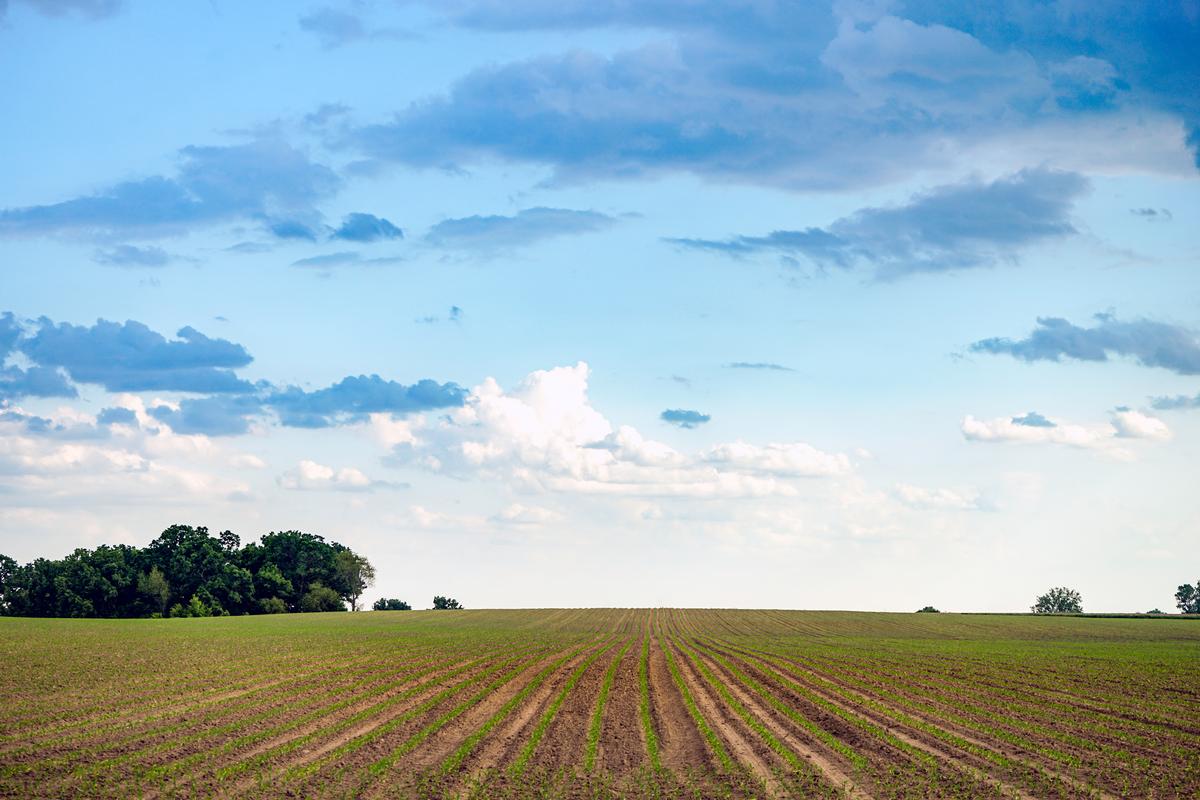
13. Spring Grove, Minnesota
If you’re searching for a place where history, community, and countryside beauty come together, this town is a standout.
We drove just under an hour from La Crosse, WI to Spring Grove, a charming community of about 1,300 residents tucked into the rolling hills of southeastern Minnesota’s Driftless Area.
One of the highlights of my visit was RockFilter Distillery, a small-batch craft distillery that feels both rustic and refined. Their spirits—made from locally grown grains—capture the character of the region.
Exploring Spring Grove’s downtown felt like stepping into a storybook Midwestern village with a strong Norwegian influence. You can see it in the storefronts, the public art, and even the way people talk about their traditions that go back more than a century.
Another spot I loved was the Spring Grove Cinema, a historic small-town movie theater that brings unexpected charm and nostalgia.
What stood out most was how Spring Grove blends its deep cultural roots with modern creativity: heritage festivals, unique local businesses, and a landscape that feels untouched and peaceful.
- Location: Southeastern Minnesota in the heart of the Driftless Area
- Map & Directions
What I loved best:
For me, Spring Grove is one of the best places to visit in Minnesota because it's peaceful, affordable, and hope you will love it too!
I loved how every piece of the town felt meaningful, from the proud Scandinavian history to the beautiful countryside!
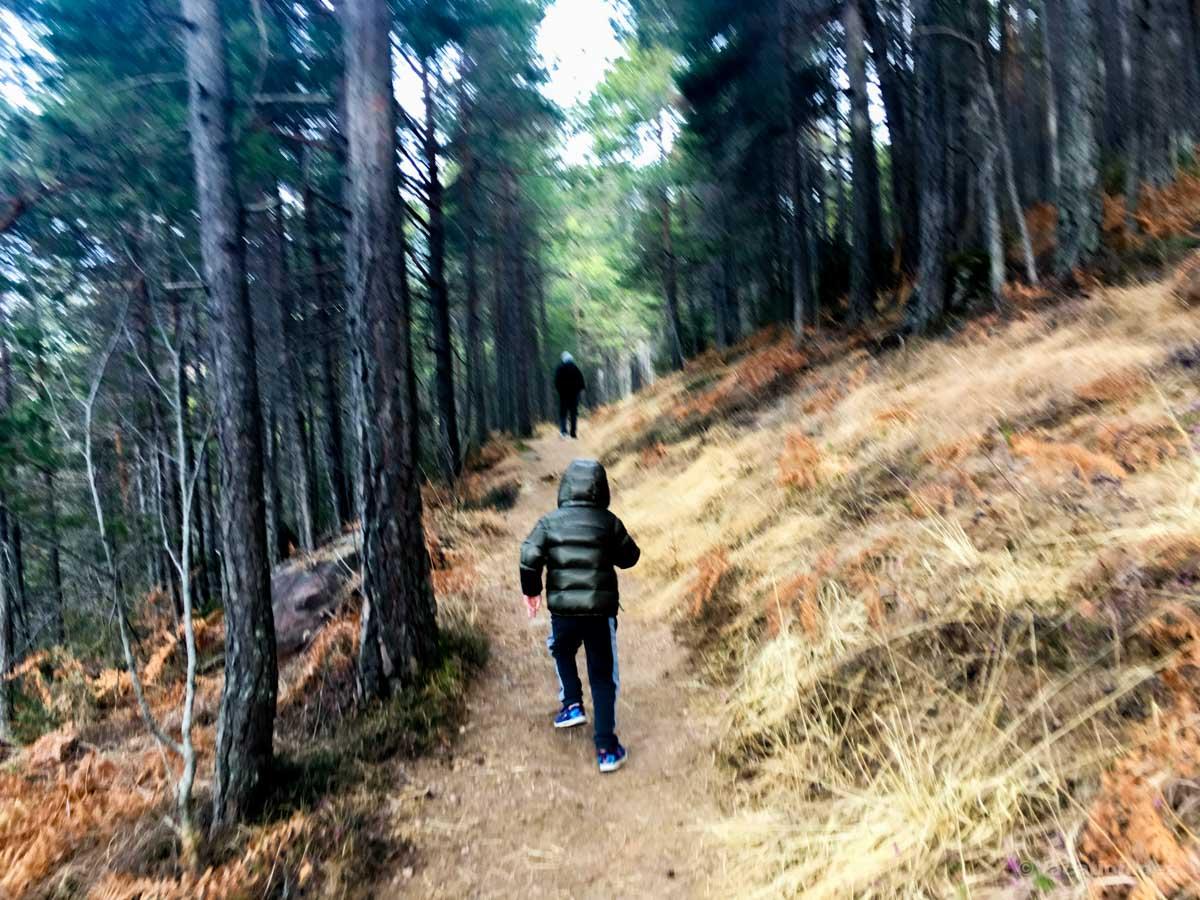
Booking Checklist
1. Book Your Flight - I use Expedia because I like their mobile app with my itinerary. They've helped me re-book flights on many occasions. Once you reach their Gold tier, support is especially good.
2. Book Your Hotel - I use Booking.com or Expedia, depending on my destination.
3. Book Your Rental Car - I use Expedia.
4. Book your tours on Viator or Get Your Guide.
5. If you are planning to visit more than three national parks in the next 12 months, buy the America the Beautiful Pass.
